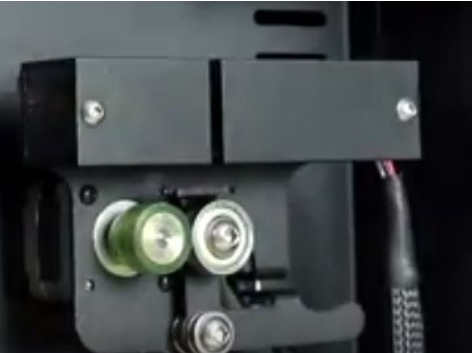In the recently published ‘Investigation on Filament Extrusion of Thermoplastic Elastomer (TPE) for Fused Deposition Modeling,’ authors Wang Zicheng and Mohammad Nouri have written a thesis exploring thermoplastic elastomers in 3D printing from granulate to filament, finding ways to optimize these materials that offer all the benefits of plastics and rubber, with deformability characteristics bordering on the 4D realm, stretching, and then returning back to their original shape.
TPEs are useful in applications such as electronics, home appliances, the automobile industry, and even packing materials. The authors point out that with such powerful advantages, the 3D printing industry has begun to give more attention to TPE.
In this study, the goal was to find the best parameters for filament extrusion, in terms of temperature and speed—using the 3Devo Filament Extruder, capable of extruding more flexibly with four heating units.
“Extrusion speed is another vital parameter in filament extrusion which directly affect the configuration of the filament,” stated the researchers. “The extrusion speed can be accurate to 0.1 rpm on the extruder. The second aim of the investigation is to find out the optimal extrusion speed which produce the high-quality filament efficiently.
“Once the first optimal parameter was found, it was applied in the following experiment for next parameter. The basic methodology is to create a circulation flow until all the information are confirmed.”
For the key indicator, diameter tolerance was set, representing fluctuation in filament during the extruding process.
Focusing on issues with inconsistent material flow, the researchers explored surface friction and how to decrease such aspects via a lubricant additive.
The 3Devo Filament Extruder already offers default temperatures and speed for materials like PLA and ABS, with most materials regulated to increasing from heater 4 to 1.
Overall, the research team discovered that optimal extrusion temperatures for TPE-SEPS were 185,195,200,205℃ from heater 4 to heater 1. The optimal speed was 2.4 RPM, allowing for not only suitable maintenance of roundness and consistency, but they were also able to maximize productivity.
“The lubrication test reaches the expectation with the lubrication additive covers the surface of the filament and linearly reduce the surface friction with the increase in percentage. The print feasibility increases with the percentage of lubrication additive. Special printer setting and printing head are required to reach the highest quality. The most commonly defect of the printing process is the inconsistence of extrusion. Too much surface friction combined with low stiffness of the material is the main cause of this defect. The filament is able to finish printing flat, low-height products with promising quality,” concluded the researchers.
“When it come to the print feasibility, this investigation focuses only on one possible cause which is the surface friction. Other aspects include print head or the parameters of the printer during manufacturing have not been investigated. Each test setting could be recorded and analyzed to find out the identical setting for the extruded filament.”
3D printing with thermoplastics continues to be an ongoing area of refining, as researchers explore FDM thermoplastics further, along with high-performance materials, and more. What do you think of this news? Let us know your thoughts! Join the discussion of this and other 3D printing topics at 3DPrintBoard.com,
[Source / Images: ‘Investigation on Filament Extrusion of Thermoplastic Elastomer (TPE) for Fused Deposition Modeling’]
Subscribe to Our Email Newsletter
Stay up-to-date on all the latest news from the 3D printing industry and receive information and offers from third party vendors.
You May Also Like
3D Printing Serves as a Bridge to Mass Production in New Endeavor3D White Paper
Now that additive manufacturing (AM) has demonstrated itself as a production technology, the scale up for the industry may be found in bridge production. As evidenced during COVID-19, 3D printing...
3D Printing Webinar and Event Roundup: April 14, 2024
We’re starting off the week’s 3D printing webinars and events at ASTM AMCOE’s 11th Snapshot Workshop and MACH Exhibition. Stratasys continues its advanced training courses, SME is holding a virtual...
Onward for Velo3D with Optimistic Q1 Outlook, Gaining Momentum in Defense Sector
Just days after Velo3D (NYSE: VLD) revealed a brutal earnings report, the company is showing some signs of recovery, announcing bookings totaling $27 million since mid-December. What’s more, Velo3D shared...
3D Printing Market Hits $14.7B Amid Challenges in 2023
Last year was one of dire moping for the 3D printing market, as the effects from the broader macroeconomic climate affected the public and private markets. Despite the doom and...




































